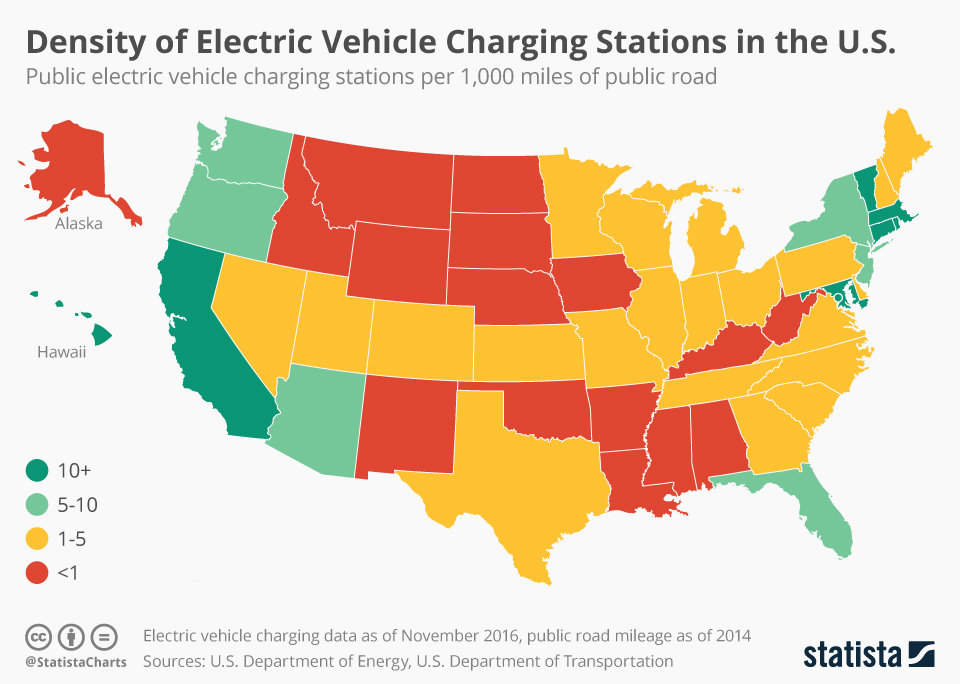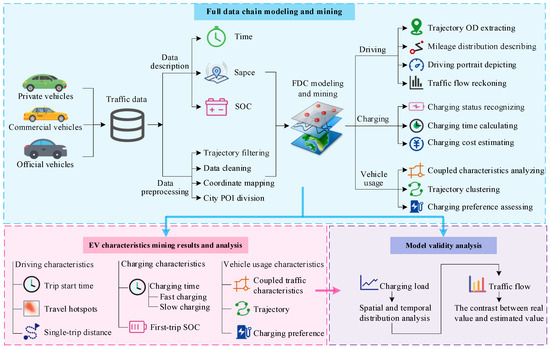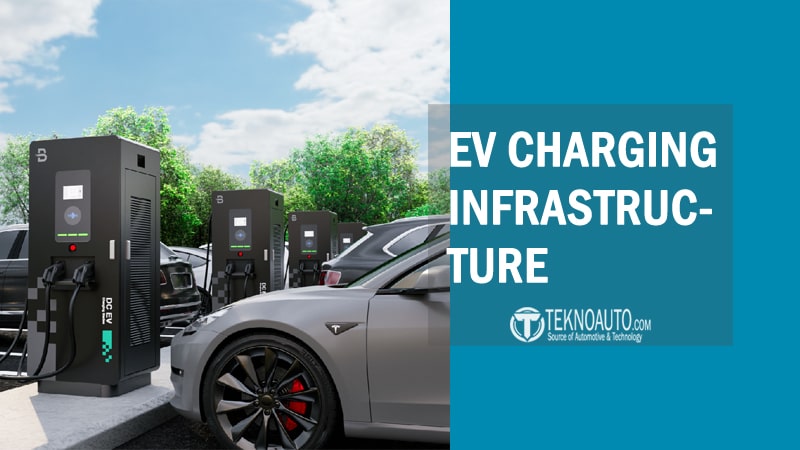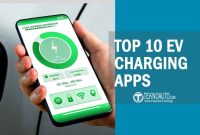The fear of running out of battery mid-journey remains one of the biggest psychological roadblocks for Electric Vehicle (EV) adoption. For many drivers, especially those transitioning from gasoline-powered cars, the uncertainty of whether a charging station will be available when needed creates a persistent concern known as EV range anxiety. But as cities and countries ramp up investments in EV charging infrastructure, that anxiety is beginning to fade.
From highway corridors lined with fast chargers to interactive maps that guide drivers to the nearest available station, modern charging networks are quietly reshaping the EV experience.
So how exactly does EV charging infrastructure ease range anxiety—and is it working well enough to encourage mass EV adoption?
Understanding EV Range Anxiety
For many drivers considering the switch to electric vehicles, one fear outweighs all others: the fear of not making it to the next charging station. This anxiety, though partly psychological, is rooted in real-world limitations—particularly the availability and reliability of EV charging infrastructure.
What Is EV Range Anxiety?
EV range anxiety refers to the stress or fear that an electric vehicle’s battery will run out of power before reaching a charging point. Unlike gasoline cars, which benefit from decades of dense fuel station networks, electric vehicles depend on charging infrastructure that’s still in development in many regions. This often leads drivers to worry about getting stranded, especially on longer trips or in unfamiliar areas.
Why It Matters to EV Adoption
Range anxiety isn’t just a personal concern—it’s a market-wide barrier. Surveys consistently show that potential EV buyers rank charging access as a top reason for hesitation. Even with modern EVs offering 250–400 miles of range, doubts remain about where and how fast they can recharge. Without robust EV charging infrastructure, many consumers see electric vehicles as impractical for daily or long-distance use.
Psychological vs. Practical Concerns
Interestingly, range anxiety is often driven more by perception than reality. Most daily driving needs fall well within an EV’s typical range. Yet without visible, trustworthy infrastructure, even short trips can feel risky. On the practical side, poorly maintained or occupied chargers add to the problem—highlighting that the solution lies not just in hardware, but in creating a reliable, user-friendly charging ecosystem.
Common Scenarios Where Range Anxiety Occurs
- Long-distance travel across rural or underserved areas
- Commuting in high-traffic zones without guaranteed access to workplace chargers
- Urban living where drivers rely on public charging stations rather than home setups
- Winter driving, which reduces battery efficiency and magnifies concerns
Bagus! Kita lanjut ke bagian berikutnya:
The Role of EV Charging Infrastructure in Combating Range Anxiety

The moment a driver sees a charging station icon pop up on their dashboard navigation, something shifts—uncertainty gives way to confidence. At the heart of that reassurance is a growing web of EV charging infrastructure that’s making electric travel feel less like a risk and more like a routine.
But infrastructure isn’t just about having more plugs—it’s about strategic placement, reliability, speed, and smart integration.
Let’s break down how EV charging infrastructure directly tackles the core causes of range anxiety.
Availability and Accessibility of Charging Stations
The single most effective way to reduce EV range anxiety is by ensuring that drivers can find a charging station—anytime, anywhere. A well-distributed network of stations across highways, urban centers, and suburban routes creates a mental safety net for EV users.
The wider and more accessible the EV charging infrastructure becomes, the less drivers worry about running out of battery.
Urban vs. Rural Infrastructure Gaps
Urban areas are typically the first to benefit from EV charging rollouts, with dense station availability near shopping centers, parking garages, and office buildings.
Rural regions, however, often suffer from sparse infrastructure, creating “charging deserts” that heighten range anxiety for long-distance travelers. Bridging this gap is critical to equitable EV adoption.
Fast Charging vs. Level 2 Charging
EV charging infrastructure is not one-size-fits-all. Level 2 chargers, while affordable and common, often require hours to fully charge a vehicle. DC Fast Chargers, on the other hand, can restore 80% of battery capacity in under 30 minutes.
For drivers facing time pressure or long journeys, fast charging is a game changer. Increasing the number of fast chargers along major routes significantly boosts driver confidence.
Real-Time Charging Station Mapping Technologies
Today’s EV drivers don’t just rely on static station maps—they expect live availability updates, pricing information, and even station condition reports.
Modern EV charging infrastructure increasingly integrates with apps and navigation systems that deliver real-time data, helping drivers avoid closed or occupied stations and plan efficient charging stops.
Integration with Navigation Systems
EVs from manufacturers like Tesla, Hyundai, and Ford now come equipped with smart route planners that incorporate charging needs into navigation. These systems factor in battery level, elevation, traffic, and available stations to guide drivers with precision.
This seamless integration reduces guesswork and significantly eases the cognitive load of planning a trip, thereby reducing range anxiety.
Case Study: Tesla Supercharger Network
Tesla’s proprietary Supercharger network is perhaps the clearest example of how reliable, high-speed charging infrastructure can eliminate range anxiety. With strategically placed stations along major travel corridors and near metropolitan hubs, Tesla drivers enjoy a level of assurance that other EV owners still crave.
The consistent uptime, exclusive access, and fast charging speeds have become a benchmark for what effective EV charging infrastructure looks like.
Key Components of a Reliable EV Charging Infrastructure

Reliable EV charging infrastructure is more than just an abundance of plugs—it’s a full ecosystem that drivers can trust day or night. From how fast a car can charge to how compatible stations are across brands, these components determine whether EV ownership feels effortless or stressful.
As the EV market matures, these infrastructure features are no longer optional. They’re essential to earning driver confidence and eliminating barriers to adoption.
Charging Station Density
The sheer number of available chargers in a given area is a key factor in reducing range anxiety. Dense coverage allows drivers to focus less on planning every stop and more on simply enjoying the ride. Countries with higher charger-per-capita ratios see greater EV confidence and usage.
Urban areas typically enjoy better charger density, but without rural deployment, the infrastructure remains incomplete. A reliable system must ensure consistent access across geography, not just high-density zones.
Charging Speed and Power Output
Not all chargers are equal. Level 2 stations offer moderate charging suitable for workplace or overnight scenarios. But for highway use and spontaneous travel, DC Fast Charging is crucial.
Modern EV charging infrastructure includes ultra-fast chargers capable of delivering 150kW to 350kW, slashing charging times dramatically. Faster charging minimizes downtime and makes EVs feel more like traditional vehicles in terms of refueling convenience.
Interoperability Across Brands and Networks
A major frustration for early EV adopters has been the incompatibility between different charging networks. A charger that’s incompatible with your EV model or requires a separate app or subscription adds friction to the driving experience.
Standardization across connectors, payment systems, and digital platforms makes the infrastructure seamless. The push toward universal standards like CCS (Combined Charging System) is helping to resolve this issue, fostering a truly open charging ecosystem.
Maintenance, Reliability, and Uptime
EV charging infrastructure must function as reliably as gas stations. Drivers expect chargers to be online, accessible, and functioning when they need them.
Poor maintenance leads to broken units, faulty connectors, and growing skepticism about the system. Providers that prioritize uptime monitoring and quick repairs gain user trust and help normalize EV usage for everyday driving.
Government and Private Investment Initiatives
Large-scale infrastructure projects don’t happen without substantial funding. Governments across the globe are launching incentive programs, subsidies, and infrastructure grants to accelerate EV charger deployment.
At the same time, private companies—like Electrify America, ChargePoint, and Shell Recharge—are investing in scalable, profitable networks. The future of EV charging depends on continued cooperation between public policy and commercial innovation.
How Charging Infrastructure Influences EV User Behavior

When drivers know they can reliably find a charging station wherever they go, their entire relationship with electric vehicles begins to shift. Charging stops no longer feel like interruptions—they become a natural part of the journey. This psychological shift doesn’t just ease range anxiety; it also transforms how people drive, plan, and interact with their vehicles.
Widespread and reliable EV charging infrastructure not only builds trust, but also reshapes routines, encouraging new driving patterns and broader EV adoption.
Changes in Daily Driving Habits
In areas with robust infrastructure, EV owners become less conservative with their daily mileage. Instead of always “saving battery” or avoiding longer trips, drivers grow comfortable with spontaneous detours, errands, and even last-minute travel.
Knowing that chargers are nearby reduces the need to plan obsessively. Over time, this leads to greater usage of electric vehicles for daily commutes, school runs, or weekend getaways without the fear of getting stranded.
Reduction of “Charge Hoarding” Mentality
In regions where charging infrastructure is still developing, many EV users tend to “top off” their battery every chance they get—even when unnecessary. This behavior, known as charge hoarding, stems from uncertainty about when and where they’ll next find a charger.
A well-distributed network removes this anxiety. Drivers charge when needed, not out of fear. The result is a more balanced and efficient use of infrastructure, freeing up chargers for those who actually need them.
Increased Confidence in Long-Distance Travel
Long road trips have traditionally been a sticking point for EVs. Even if a vehicle has the range, the unpredictability of finding fast chargers mid-journey creates hesitation.
EV charging infrastructure that includes highway fast chargers, rest-stop hubs, and integrated navigation support has made long-distance travel far more accessible. As this network expands, more drivers feel confident hitting the open road—just as they would with a gasoline vehicle.
Behavioral Data from EV Owners in High-Infrastructure Areas
Surveys and user data consistently show that drivers living in areas with high charging station density report lower levels of range anxiety, higher annual mileage, and greater overall satisfaction with EV ownership.
These users are also more likely to recommend EVs to others, helping accelerate adoption through word of mouth. The behavioral patterns emerging from well-infrastructured areas offer a preview of what’s possible at scale—if the infrastructure keeps up.
Global Comparison of EV Charging Infrastructure
Not all EV markets are created equal. Some countries have invested aggressively in charging infrastructure, while others lag behind, creating major disparities in user experience and adoption rates. By comparing how different regions build and deploy EV charging infrastructure, we gain insight into what works—and what doesn’t—when it comes to reducing range anxiety on a national scale.
Understanding these differences also highlights the importance of strategic infrastructure planning tailored to geography, population density, and driving culture.
Europe vs. United States vs. China
Europe has led much of the global charge in EV infrastructure, especially countries like the Netherlands, Norway, and Germany. High-density urban planning, strong public transit, and government mandates have resulted in some of the most reliable and widespread charging networks in the world.
The United States, by contrast, has taken a more fragmented approach. While California and several other coastal states boast solid infrastructure, large parts of the Midwest and South remain underserved. Federal efforts like the NEVI (National Electric Vehicle Infrastructure) program aim to change that.
China, meanwhile, is scaling at a speed unmatched by any other country. With government-backed investment and centralized planning, China has deployed over a million public charging points and continues to grow rapidly—particularly in urban areas and along national highways.
Public vs. Private Infrastructure Development
In Europe, a significant portion of EV charging infrastructure is developed and maintained by government agencies or publicly funded partnerships. This approach ensures more equitable access and aligns charging station placement with long-term urban planning goals.
In the U.S. and China, private companies often take the lead. Brands like Tesla, ChargePoint, and NIO invest in their own networks—sometimes exclusive to their vehicles. While this can lead to innovation and speed, it may also cause fragmentation unless supported by policy-driven standardization.
Table: Fast Chargers per 100,000 EVs by Country (2024 Data)
| Country | Fast Chargers per 100,000 EVs | Notes |
|---|---|---|
| Netherlands | 725 | Highest density globally, highly urbanized network |
| China | 680 | Rapid growth, majority located in metro areas |
| Norway | 610 | High EV adoption rate, well-distributed network |
| United States | 190 | Concentrated in select states, rural gaps remain |
| Germany | 420 | Expanding steadily with strong government support |
| UK | 385 | Focused on motorway corridors and city centers |
This data underscores the direct relationship between infrastructure availability and driver confidence. Countries with higher fast charger density experience greater EV usage and lower reported range anxiety.
Barriers to EV Charging Infrastructure Expansion
While the demand for electric vehicles continues to rise, building out the infrastructure to support them isn’t as simple as installing more chargers. A number of challenges—technical, financial, regulatory, and even geographic—stand in the way of scaling EV charging infrastructure fast enough to meet consumer expectations.
Recognizing these barriers is essential to understanding why some regions progress quickly, while others struggle to reduce EV range anxiety.
High Installation Costs
Setting up a public charging station involves far more than placing a plug in a parking lot. Trenching, cabling, transformer upgrades, and permitting can quickly drive up costs, particularly for fast chargers that demand more electrical power.
Private companies often hesitate to invest in low-traffic areas, creating infrastructure gaps. Meanwhile, public agencies face budget constraints that can delay or limit deployment.
Grid Capacity and Electrical Supply Challenges
A less visible, but equally critical barrier is the capacity of local power grids to handle increased loads. As more EV chargers are added—especially high-powered ones—some areas may face voltage drops, instability, or the need for expensive grid upgrades.
Inadequate grid readiness not only slows charger deployment but can also impact long-term sustainability. Without proactive planning, rapid infrastructure growth could overload systems not built for this scale of demand.
Land Use, Permits, and Urban Planning
Urban real estate is scarce and expensive, making it difficult to allocate space for charging stations—especially those requiring extended dwell times. In many cities, existing parking infrastructure isn’t designed for retrofitting with EV chargers.
On top of that, local permitting processes can be slow, inconsistent, and bureaucratic. Delays in approvals or utility coordination add months to deployment timelines, frustrating developers and investors alike.
Standardization Issues Across Manufacturers
With no universal standard adopted globally, differences in charging connectors, payment systems, and software platforms can complicate usage for EV drivers. A Tesla owner, for instance, may not be able to charge at the same station as a Nissan Leaf driver without an adapter.
Lack of interoperability undermines the core purpose of a public charging network: universal accessibility. Until standardization improves, range anxiety will persist—even in areas with sufficient charger density.
Future Innovations in EV Charging Infrastructure
As electric vehicles move from early adoption into the mainstream, the future of EV charging infrastructure is no longer just about expansion—it’s about evolution. From wireless charging pads to bi-directional energy flow, tomorrow’s charging technologies are designed to be faster, smarter, and more integrated with the broader energy ecosystem.
These innovations won’t just make charging more convenient—they’re poised to redefine how we think about energy consumption, grid interaction, and the role of EVs in everyday life.
Wireless Charging
Imagine parking your EV and having it charge automatically—no cables, no ports, no waiting. Wireless charging, also known as inductive charging, promises exactly that. Although still in early phases, this technology uses electromagnetic fields to transfer energy between a pad embedded in the ground and a receiver in the car.
Wireless EV charging infrastructure is already being piloted in some cities and could revolutionize urban mobility. For taxi fleets, delivery vehicles, or autonomous shuttles, wireless systems offer efficient, contactless charging without disrupting vehicle flow.
AI-Based Grid Load Balancing
As EV adoption scales, the energy demand placed on local grids will surge. To avoid blackouts or power bottlenecks, smart infrastructure powered by AI can dynamically manage energy flow—prioritizing charging where needed most and shifting loads during peak hours.
By predicting usage patterns and grid stress in real time, AI-driven infrastructure can reduce operational costs, enhance system resilience, and make large-scale EV charging sustainable in the long run.
Vehicle-to-Grid (V2G) Integration
EVs don’t have to be passive energy consumers—they can be active participants in the energy grid. Vehicle-to-grid (V2G) technology allows EVs to discharge energy back into the grid during high-demand periods, effectively becoming mobile energy storage units.
As EV charging infrastructure evolves to support bi-directional power flow, V2G could help stabilize the grid, reduce peak demand charges, and even generate income for EV owners who allow their cars to “share” stored energy when parked.
Renewable Energy Integration with Charging Networks
To truly decarbonize transportation, charging infrastructure must be powered by clean energy. Solar-powered EV charging stations, battery-backed microgrids, and wind-fed charging hubs are becoming more common in areas committed to sustainability.
Integrating renewables into EV charging infrastructure not only reduces carbon emissions but also enhances energy independence and grid flexibility. In some models, solar panels charge battery banks during the day, which then power EVs even at night or during outages.
Ultra-Fast Charging Technology (350kW and Beyond)
The next generation of ultra-fast chargers is closing the gap between refueling a gas tank and recharging an EV. Chargers capable of delivering 350kW or more can add up to 200 miles of range in under 10 minutes—depending on the vehicle.
With automakers like Porsche, Hyundai, and Lucid building vehicles that support higher charging speeds, the infrastructure must follow. Ultra-fast EV charging infrastructure could be the tipping point that convinces traditional car buyers to make the switch.
The Economics of Reducing Range Anxiety
Solving EV range anxiety isn’t just a technological or psychological challenge—it’s an economic one. Behind every charger installed, every station maintained, and every policy passed is a financial calculation that weighs cost, return, and long-term value.
Understanding how EV charging infrastructure impacts the economy, consumer confidence, and the broader auto industry reveals why investments in this area are more than just support for green technology—they’re business-critical decisions shaping the future of transportation.
Impact on EV Sales and Consumer Confidence
When potential buyers see charging stations regularly in parking lots, along highways, or integrated into navigation apps, their hesitation decreases. Access to a reliable EV charging infrastructure builds consumer trust and increases willingness to buy electric vehicles.
According to industry data, regions with dense charging networks consistently report higher EV adoption rates. As infrastructure becomes more visible and intuitive, range anxiety fades—and with it, one of the biggest objections to EV ownership.
ROI for Charging Network Investments
While upfront costs for building EV charging infrastructure are significant, the return on investment (ROI) can be compelling—especially over time. Charging stations generate revenue through usage fees, partnerships with retailers, and even dynamic pricing during peak hours.
Moreover, as more EVs hit the road, utilization rates for chargers rise, improving financial viability. Strategic placement near shopping centers, hotels, or office parks adds further commercial value by drawing foot traffic and increasing dwell time.
Cost-Benefit Analysis for Public Infrastructure Funding
For governments, funding EV infrastructure involves weighing the societal and environmental benefits against public expenditure. But when factoring in reduced emissions, energy independence, health cost savings from cleaner air, and long-term urban mobility goals, the investment pays off on multiple fronts.
Well-designed public-private partnerships can distribute financial risk, accelerate deployment, and ensure that EV charging infrastructure reaches underserved areas—not just high-profit zones. In the broader picture, reducing range anxiety isn’t just good policy—it’s smart economics.
Conclusion
The journey toward widespread electric vehicle adoption is as much about trust as it is about technology. While early EVs sparked curiosity, it’s the expanding EV charging infrastructure that’s beginning to solidify long-term confidence. Each reliable, accessible, and visible charging station acts as a reassurance—a small but vital message that EVs are not just possible, but practical.
As we’ve seen, solving range anxiety isn’t merely a matter of battery capacity. It’s about creating a seamless charging experience that mirrors—or even improves upon—the convenience of gas-powered travel. From dense urban chargers to cross-country fast-charging corridors, the presence of dependable infrastructure transforms EV ownership from a cautious experiment into a mainstream lifestyle.
The challenge now is scale. Governments, private companies, and communities must work together to expand and enhance EV charging infrastructure in ways that are inclusive, forward-thinking, and sustainable. Because when drivers no longer worry about where their next charge will come from, that’s when electric vehicles will truly take the lead on the road ahead.
FAQ About How EV Charging Infrastructure Reduces EV Range Anxiety
How does EV charging infrastructure help reduce range anxiety?
By providing widespread, reliable, and fast charging options, EV charging infrastructure ensures that drivers can recharge when and where they need to—removing the fear of running out of power mid-journey.
What type of charging stations are best for reducing range anxiety?
DC Fast Chargers are most effective, especially on highways and for long-distance travel, as they significantly reduce charging time compared to standard Level 2 stations.
Which countries have the best EV charging infrastructure?
The Netherlands, China, and Norway currently lead in terms of fast charger density and overall network accessibility, offering the most confidence for EV drivers.
What are the biggest challenges in expanding EV charging infrastructure?
High installation costs, grid limitations, land use challenges, and lack of standardization across manufacturers are key barriers to large-scale deployment.
Will future technologies like wireless charging reduce range anxiety even more?
Yes. Innovations such as wireless charging, AI-based grid balancing, and ultra-fast chargers are expected to make EV charging even more seamless and accessible.




